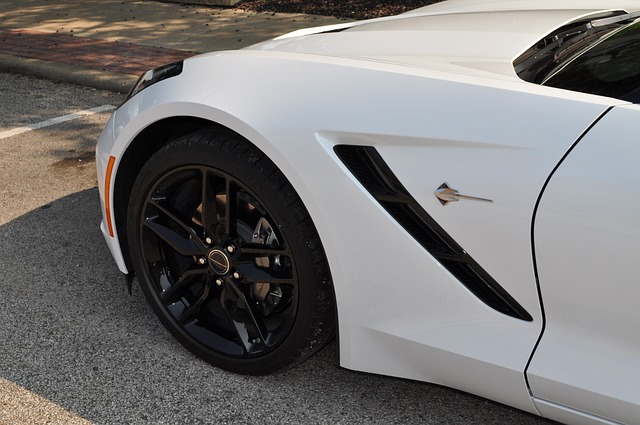Buying a car is a significant milestone in one’s life, whether it’s your very first vehicle or an upgrade to accommodate a growing family. It’s not just about choosing a color or a brand; it involves careful consideration of your needs, budget, and the long-term costs involved.
With a myriad of options available in the market, the process can feel overwhelming.
This guide aims to simplify your car-buying journey, providing you with step-by-step instructions from determining your budget to driving off the lot with your new ride.
Whether you’re eyeing a brand-new model straight from the showroom or a pre-loved gem, we aim to arm you with the knowledge and confidence to make an informed decision.
Look For Local Finance Options
Before setting foot in a dealership, it’s critical to explore local finance options. This step involves researching available car loans from banks, credit unions, and online lenders.
Interest rates, loan terms, and approval criteria can vary significantly between these institutions, so take your time to compare and find the best deal that suits your financial situation.
Whether it’s car finance in Brisbane, Melbourne, or any other city, be sure to check for any special offers or promotions that may sweeten the deal. It’s also worth considering getting pre-approved for financing to give you an idea of your budget and negotiating power at the dealership.
Research Different Makes and Models
After securing your financial options, the next critical step is to research different makes and models that fit your budget and lifestyle needs. This involves considering factors such as fuel efficiency, reliability, safety features, and technology integrations.
Start by listing what’s most important to you in a vehicle—be it cargo space for family trips, a robust engine for long commutes, or advanced driver-assistance systems for safety. Utilize online resources, consumer reports, and automotive review websites to compare cars and narrow down your choices.
Don’t forget to check for the vehicle’s resale value and ownership costs, including maintenance and insurance, to ensure you’re making a well-rounded decision.
Consider Buying New vs. Used
When determining whether to buy a new or used car, it’s essential to weigh both the advantages and drawbacks of each option. New cars come with the latest features, full warranties, and the peace of mind that comes with knowing the vehicle has no prior wear and tear.
They also offer the newest safety features and fuel efficiency technologies. However, new cars can be significantly more expensive due to their immediate depreciation once driven off the lot.
On the other hand, used cars can be much more budget-friendly and offer the opportunity to get a higher-end model at a lower cost. However, potential buyers should be cautious of the vehicle’s history, including previous accidents, maintenance records, and the possibility of higher long-term maintenance costs.
It’s critical to perform a thorough inspection and possibly obtain a vehicle history report before making a purchase decision on a used car. Ultimately, your choice between new and used will depend on your financial situation, lifestyle needs, and comfort with the vehicle’s history.
Test Drive and Inspect the Vehicle
Before making any final decision, test-driving the vehicle is imperative. It’s the best way to assess if the car meets your expectations in terms of handling, comfort, and performance. Schedule test drives for all the vehicles on your shortlist at nearby dealerships.
While driving, pay close attention to visibility, seat comfort, the responsiveness of the engine, and the ease of using the controls and infotainment system.
If you’re considering a used car, it’s crucial to conduct a thorough inspection or, better yet, hire a certified mechanic to examine the vehicle. They can check for issues that aren’t visible to the untrained eye, including mechanical problems or prior damage that could lead to costly repairs down the line.
This step will provide you with peace of mind and ensure that your potential vehicle is in good condition before you commit to purchasing.

Negotiate the Price
Once you’ve settled on the vehicle that best suits your needs and have taken it for a test drive, the next step is to negotiate the price. This phase can be daunting for many, but with preparation and confidence, you can ensure you’re getting the best deal possible.
Start by researching the fair market value of the car you’re interested in, using online pricing guides, and comparing prices of similar models in your area. This research will give you a strong foundation for negotiation.
When discussing price, be polite yet firm, and always ready to walk away if the deal doesn’t meet your expectations. Present your research confidently and ask for a breakdown of any additional fees to avoid surprise charges.
The sticker price is often higher than what the dealer is willing to accept, so don’t be afraid to make a lower offer. If you’re trading in an old vehicle, discuss its value separately to ensure you get a fair price for both the trade-in and the new vehicle.
Negotiating effectively can save you hundreds or even thousands of dollars, so take your time and don’t rush the process.
Finalize the Purchase and Paperwork
Finalizing the purchase of your new or used car is the last step in your car-buying journey. This part involves reviewing and signing various documents to officially transfer ownership. It’s essential to read through all the paperwork carefully, ensuring that you understand everything you’re agreeing to.
This includes the sale contract, warranty documents (if applicable), and financing agreement. Be attentive to the details, like the APR, payment schedule, and any additional fees or charges included.
It’s also crucial to ensure that the title and registration are properly handled. New car purchases typically involve the dealer taking care of these steps, but for used cars, especially private sales, you may need to visit your local DMV or registry office.
Don’t forget about insurance; make sure you have an appropriate policy in place before driving off. This step can often be completed quickly, as insurance companies are accustomed to working efficiently to insure new vehicle purchases.
In conclusion, buying a car involves careful planning, research, and negotiation. By following this step-by-step guide, you can navigate the car-buying process with confidence and make an informed decision that meets your budget and lifestyle needs.
Remember to take your time and consider all options before finalizing your purchase; after all, a car is a significant investment that should bring joy for years to come.






